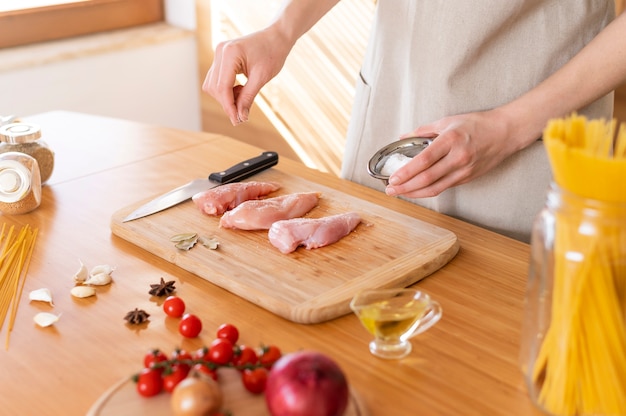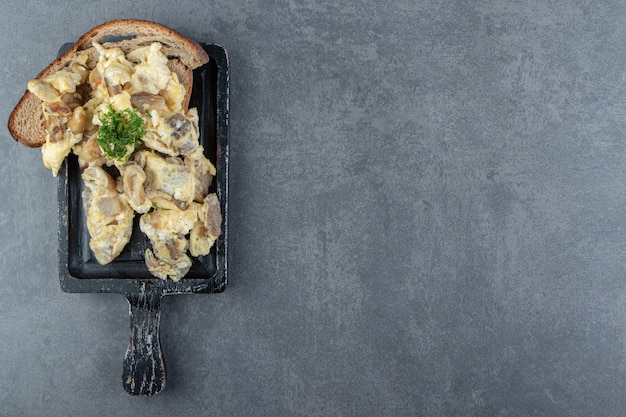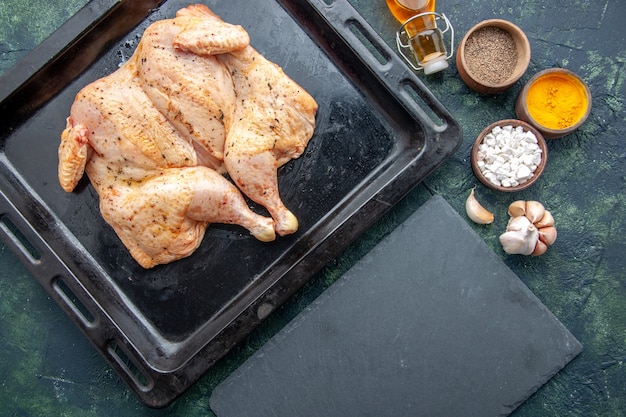Ah, chicken thighs! They're a real crowd-pleaser, aren't they? Juicy, flavourful, and always a hit. I've been cooking them for years, and I've learned a thing or two about getting them just right. Gone are the days of dry, rubbery chicken! We're talking melt-in-your-mouth goodness here.
And the best part? cooking chicken thighs on the stovetop is incredibly easy and quick. You don't need fancy equipment or a million years to whip up a delicious meal.
So, grab your apron, and let's dive into the world of perfectly cooked chicken thighs!
(Part 1) The Chicken Thigh Primer

Before we get into the specifics of cooking times, let's get a handle on the basics.
Why Choose Chicken Thighs?
You might be wondering, why are chicken thighs the best choice? Well, they're simply superior to breasts! They're naturally packed with more flavour, hold their moisture better, and they're just plain forgiving. We've all had the experience of overcooking a chicken breast – dry and rubbery? Not a good look! Chicken thighs, on the other hand, stand up to a little more heat. They're the real deal!
Selecting the perfect chicken Thighs
Choosing the right chicken thighs is the first step to culinary success.
- Fresh or Frozen? Fresh is always best. But let's be real, we all have those nights where frozen is the only option. If you're using frozen chicken thighs, make sure they're completely thawed before you start cooking.
- Skin-On or Skin-Off? This is a matter of personal preference. skin-on chicken thighs will stay juicier, but you can easily remove the skin before or after cooking. The choice is yours!
- Bone-In or Boneless? For stovetop cooking, boneless chicken thighs are the way to go. They cook much faster and are easier to manage.
Temperature is Key: Don't Underestimate the Thermometer!
Remember that magic number: 165°F (74°C). This is the internal temperature your chicken needs to reach for safe and delicious results. No exceptions!
(Part 2) Setting the Stage: Your Stovetop Toolkit

You don't need a Michelin-star kitchen to cook amazing chicken thighs. Just a few trusty tools will do the trick.
- Skillet or Frying Pan: A good quality, oven-safe skillet or frying pan is your trusty companion for this journey. Choose one with a heavy base so it distributes heat evenly.
- Tongs: These are essential for flipping and manoeuvring your chicken without piercing it.
- meat thermometer: A reliable meat thermometer is your secret weapon, especially if you're new to cooking chicken. It takes the guesswork out of the equation and ensures your chicken is cooked to perfection.
- Cutting Board: A clean cutting board is a must-have for prepping your chicken.
Prepping Your Chicken Thighs for Success
A little pre-cooking TLC goes a long way with chicken thighs.
- Pat Dry: Use paper towels to pat the chicken thighs dry. This will help them brown nicely and prevent steaming during cooking.
- Seasoning: Now it's time to let your creativity shine! Salt and pepper are always a good starting point, but feel free to experiment with herbs, spices, or even a marinade. My go-to? Paprika, garlic powder, and a squeeze of lemon juice for a burst of bright flavour.
(Part 3) Mastering the Stovetop: Time to Cook!

Alright, let's get down to business.
Heat is the Key to Success
The right heat is the secret to perfectly cooked chicken thighs.
- Medium-High Heat: Start by heating your skillet or frying pan over medium-high heat. This will give your chicken a beautiful crispy crust without burning it.
- Don't Overcrowd the Pan: Avoid cramming your chicken into the pan. This can create too much steam and prevent proper browning. If you have a large batch, cook the chicken in smaller batches.
Cooking Time: It's Not One-Size-Fits-All
The cooking time for boneless chicken thighs can vary depending on the thickness, the heat of your stovetop, and whether you're cooking with skin or without.
Here are some general guidelines:
| Thickness (cm) | Skin-On (Minutes) | Skin-Off (Minutes) |
|---|---|---|
| 1-1.5 cm | 8-10 | 6-8 |
| 1.5-2 cm | 10-12 | 8-10 |
| 2-2.5 cm | 12-14 | 10-12 |
Important Note: These are just guides! Always use a meat thermometer to ensure your chicken is cooked through to an internal temperature of 165°F (74°C).
(Part 4) Knowing When It's Done: The Signs of Perfection
How do you know when your chicken thighs are ready to shine? Here's what to look for:
- Colour: The chicken should be cooked through and no longer pink in the centre.
- Texture: The chicken should be firm to the touch, not jiggly or soft.
- Juices: When you pierce the chicken with a fork, the juices should run clear, not pink.
If you're unsure, use your trusty meat thermometer to check the temperature.
(Part 5) The Power of Resting: Patience is a Virtue!
Once your chicken thighs are cooked, resist the urge to dive in right away! Let them rest for a few minutes before slicing and serving. This gives the juices a chance to redistribute, resulting in incredibly tender and juicy chicken.
How Long Should You Rest?
A good rule of thumb is to let your chicken rest for about 5 minutes. This little bit of patience will make a big difference in the flavour and texture.
(Part 6) Serving Up Perfection: Time to Get Creative!
Now comes the fun part – deciding what to do with your delicious chicken thighs!
Endless Possibilities:
Chicken thighs are so versatile. Here are a few ideas to get you started:
- Simple and Savoury: Pair your chicken with a simple salad, roasted vegetables, or creamy mashed potatoes.
- Global Flavours: Spice things up with a Moroccan twist using preserved lemons and harissa paste, or go for a Mexican vibe with salsa, guacamole, and cilantro.
- Creamy Delights: Indulge in creamy sauces like a rich mushroom sauce or a flavourful tomato-based sauce.
Let your culinary creativity run wild!
(Part 7) Expert Tips for Stovetop Success
Here are a few extra tips to ensure your chicken thighs are always a hit:
- Use a non-stick pan: A non-stick pan will prevent your chicken from sticking to the bottom of the pan.
- Don't Overcrowd: Give your chicken plenty of space to cook evenly. If you're cooking a large batch, cook it in smaller batches.
- Flip Just Once: Flip your chicken thighs only once during cooking. Flipping too often can dry out the chicken.
- Keep an Eye on the Heat: Adjust the heat as needed to prevent the chicken from burning.
(Part 8) Common Mistakes to Avoid
We all have those moments in the kitchen where things don't go as planned. Here are a few common mistakes to avoid when cooking chicken thighs on the stovetop:
- Undercooking: undercooked chicken is a no-no! Always cook your chicken thighs to an internal temperature of 165°F (74°C).
- Overcooking: Overcooked chicken thighs will be dry and tough. Pay close attention to the cooking time and use your thermometer!
- Crowding the Pan: Crowding the pan prevents your chicken from browning properly and could lead to steam build-up.
- Flipping Too Often: Flipping your chicken thighs too often can lead to dryness.
- Not Resting: Remember, resting your chicken after cooking allows the juices to redistribute for incredibly tender and juicy chicken.
(Part 9) Frequently Asked Questions
Here are some answers to your most common questions about cooking boneless chicken thighs on the stovetop:
1. Can I Use a cast iron skillet?
Absolutely! cast iron skillets are perfect for cooking chicken thighs. They retain heat well, giving your chicken a beautiful, crispy crust. Just remember to season your cast iron skillet properly before use.
2. Should I Use Oil?
Yes, a little oil will help prevent sticking and promote browning. Use a neutral oil like vegetable oil or canola oil.
3. Can I Cook Chicken Thighs with the Skin On?
Definitely! Cooking chicken thighs with the skin on keeps them moist and tender. The skin will crisp up beautifully during cooking, adding a layer of deliciousness.
4. What If My Chicken Isn't Browning?
If your chicken isn't browning, the heat might not be high enough. Increase the heat slightly and make sure the pan is hot before adding the chicken.
5. Can I Add Vegetables to the Pan?
Absolutely! Add vegetables to the pan with your chicken thighs for a complete meal. Just make sure you have enough space in the pan for the chicken to cook evenly.
I hope this comprehensive guide has given you the tools and confidence you need to cook perfect chicken thighs on the stovetop. Remember, practice makes perfect, and don't be afraid to experiment with different flavours and techniques. Happy cooking!
Everyone is watching

Perfect Rice Every Time: The Ultimate Guide to Cooking Rice
Cooking TipsAs a self-proclaimed foodie, I've always been a bit obsessed with rice. It's the foundation of countless cuisi...

Prime Rib Roast Cooking Time Chart: Per Pound Guide
Cooking TipsPrime rib roast. Just the name conjures images of lavish dinners, crackling fires, and hearty laughter. It’s ...

The Ultimate Guide to Cooking Asparagus: Tips, Techniques, and Recipes
Cooking TipsAsparagus. The mere mention of this spring delicacy conjures up images of vibrant green spears, crisp and burs...

Ultimate Guide to Cooking the Perfect Thanksgiving Turkey
Cooking TipsThanksgiving. Just the word conjures up images of overflowing tables laden with delicious food, the scent of r...

How Long to Bake Potatoes in the Oven (Perfect Every Time)
Cooking TipsBaked potatoes are a staple in my kitchen. They're incredibly versatile, delicious, and surprisingly easy to m...
